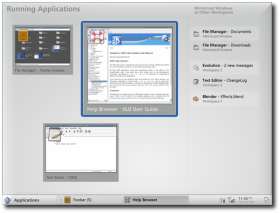Open Source Politics

 T can be rather amusing — if not frustrating — to see what diplomats and legislators know about technology. In an article from yesterday afternoon, Stephen Shankland describes the perils one has when it comes to educating politicians while evangelising Open Source.
T can be rather amusing — if not frustrating — to see what diplomats and legislators know about technology. In an article from yesterday afternoon, Stephen Shankland describes the perils one has when it comes to educating politicians while evangelising Open Source.
Mike Evans, vice president of corporate development for top Linux seller Red Hat, traveled to California’s capitol to educate legislators in the state Senate about open-source software, but he ended up getting something of an education himself.
[...]
For example, several seemed to believe that if an administrator uses open-source software that anyone can peer into the inner workings of his or her computer system.
[...]
When Evans told the Senate’s information technology personnel he’d be brining his own Linux box to show his presentation, Evans recounted, “They said, ‘What is a Linux box?’”
[...]
And the Web site that offered streaming audio of the hearing only presents Windows Media audio files.






 Filed under:
Filed under: 
 ICROSOFT have announced officially their intent to enter the anti-virus market a couple of months ago. They now unveil a service called OneCare (homonym of “wanker”) Live, which is paid for annually. In simple words, the customer gets protection for the operating system’s own flaws and pays $50 per year for the service from no-one but the O/S vendor. As
ICROSOFT have announced officially their intent to enter the anti-virus market a couple of months ago. They now unveil a service called OneCare (homonym of “wanker”) Live, which is paid for annually. In simple words, the customer gets protection for the operating system’s own flaws and pays $50 per year for the service from no-one but the O/S vendor. As 

 N my recent vacation, I made a someone’s wish come true. I finally spent time working on a dual-boot Ubuntu setting for a friend, whom I have known since the age of 5. We both grew up on DOS, but in due time got fed up with unreliable Microsoft Windows, following its more successful days which were symbolised by Windows 3.1/3.11, 95 and maybe 98 as well (though that is where its value began to dive).
N my recent vacation, I made a someone’s wish come true. I finally spent time working on a dual-boot Ubuntu setting for a friend, whom I have known since the age of 5. We both grew up on DOS, but in due time got fed up with unreliable Microsoft Windows, following its more successful days which were symbolised by Windows 3.1/3.11, 95 and maybe 98 as well (though that is where its value began to dive). FTER a few
FTER a few  One paper has
One paper has 
 HE GNOME desktop environment for Linux
HE GNOME desktop environment for Linux 